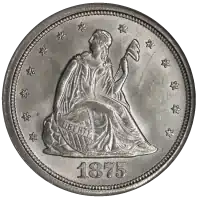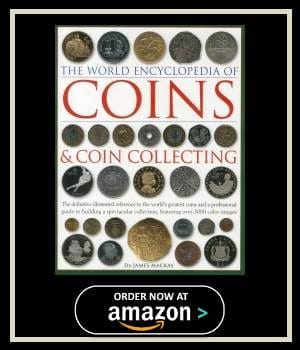
Twenty Cent Piece
The Twenty Cent Piece, nicknamed the double dime, emerged in 1875. For example, it addressed a coin shortage, leaving a unique mark on American numismatic history.
Origins of the Twenty Cent Piece
Response to Coin Shortages
In the 1870s, Spanish silver dollars dominated U.S. trade, causing a shortage of small change. Therefore, Senator John P. Jones proposed the twenty cent coin to ease transactions.
Creation and Purpose
The U.S. Mint acted quickly to produce this coin. It aimed to fill gaps in commerce, especially in the West. Thus, the double dime entered circulation in 1875.
Design and Features
William Barber’s Vision
Chief Engraver William Barber designed the coin. He depicted Lady Liberty seated on the obverse, holding a liberty cap. This symbolized freedom and resilience.
Reverse and Specifications
The reverse featured an eagle clutching arrows and an olive branch. Moreover, the coin, made of 90% silver and 10% copper, weighed 5 grams, ensuring durability.
Short-Lived Circulation
Public Confusion
The twenty cent coin resembled the quarter, causing confusion. As a result, merchants and the public struggled to distinguish them, leading to limited acceptance.
End of Production
Production ceased in 1878 after only three years. The Mint struck just over 1 million coins, with most melted. Consequently, surviving examples are scarce.
Collector Appeal
Rarity and Value
Collectors chase the Twenty Cent Piece for its rarity. Key dates, like the 1876-CC with a mintage of 10,000, fetch high prices. Well-preserved coins are especially prized.
Certification Benefits
NGC and PCGS certifications confirm authenticity and condition. Certified coins, particularly those with sharp details, command premium prices at auctions.
Preserving the Twenty Cent Piece
Storage Tips
Collectors store these coins in acid-free holders. Low humidity prevents tarnish. Thus, proper care preserves their value and beauty for future generations.
Historical Significance
This coin reflects a brief but bold experiment in U.S. currency. Its short run fascinates collectors. For instance, it captures a unique moment in economic history.
The Twenty Cent Piece tells a story of innovation and challenge. Despite its brief circulation, it captivates numismatists with its rarity and history. Therefore, this coin remains a cherished artifact, linking us to America’s numismatic past.
The brainchild behind the creation of the twenty-cent coin was none other than Nevada Senator John P. Jones. Senator Jones believed that a coin slightly larger than the dime would be the perfect solution to the small change problem. In a time when dimes and quarters were the primary denominations in use, introducing a new coin with a distinctive value seemed like a reasonable approach. The idea was to make a coin that could fill the gap between the dime and the quarter and provide more flexibility in everyday transactions.
The twenty-cent coin was minted with a composition of 90% silver and 10% copper, making it consistent with other silver coins of the era. It had a diameter of 22 millimeters, making it slightly larger than a quarter, which had a diameter of 24.3 millimeters. The coin’s obverse, or front, featured the image of Liberty, while the reverse displayed an eagle with outstretched wings, a design that was common on many U.S. coins of the time.
The introduction of the twenty-cent coin in 1875 marked an interesting departure from the usual progression of coinage in the United States. While dimes and quarters were well-established denominations, the creation of a coin with a face value of twenty cents was a unique experiment. This denomination aimed to provide a more convenient option for consumers and businesses in their daily transactions.







 '
'